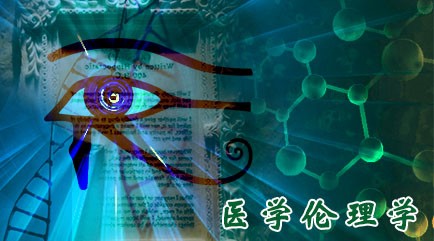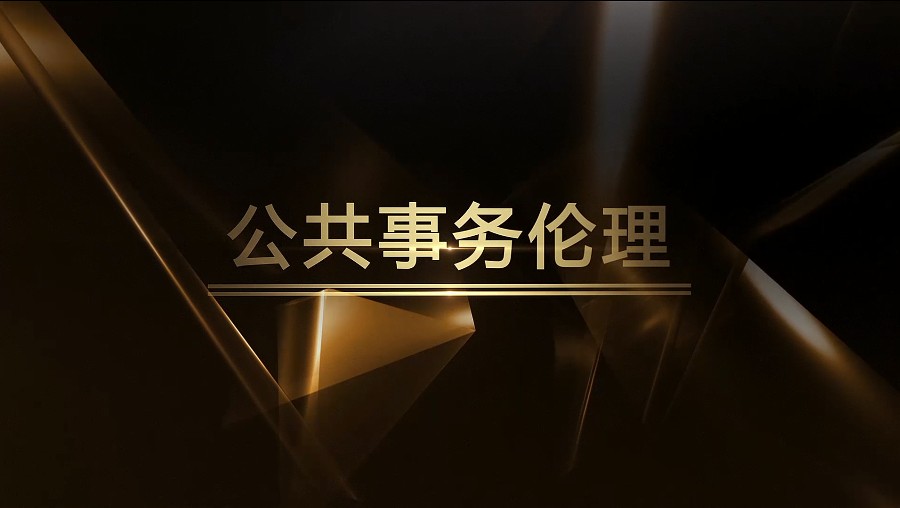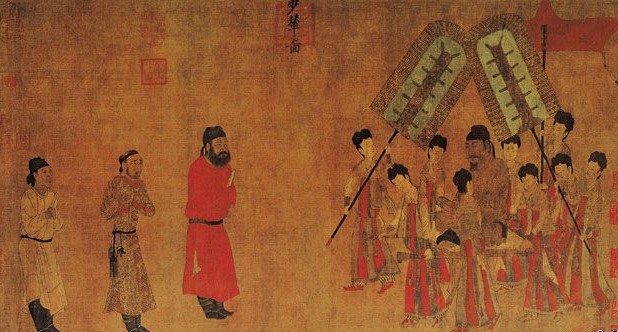
当前课程知识点:生理与遗传学基础 > 3. Blood and Circulatory System 血液与血液循环 > 3.2 Electric System of Heart 心肌生物电 > 3.2.1 心肌生物电_视频
我们介绍了心血管的结构
We introduce the structure of the cardiovascular system
这个心脏的搏动是由动作电位引起的
The beating of the heart is caused by action potential
由于细胞的这种电的冲动
Because of the electric impulse of the cells
这些心肌细胞收缩搏动
these myocardial cells contract and pulsate
那我们前面学习的细胞的动作电位
Then the action potential of the cells we studied earlier
比如神经细胞的动作电位
such as the action potential of the nerve cells
要给一个外界刺激
should be given an external stimulus
刺激足够大的话它会引起一个动作电位
if it is large enough, it will cause an action potential
但这个的不一样 心肌的不一样 不需要任何刺激
But the myocardium is different,it does not need any stimulation
它自己就能产生动作电位
it gives itself action potential
它的动作电位跟神经细胞的动作电位不一样
its action potential is different from the action potential of nerve cells
首先看这个蓝色的
First of all,look at the blue one
这个是我们以前学的神经细胞的动作电位
This is the action potential of the nerve cells we learned before
首先这是0 0越向下呢 极化的程度也就越高
First of all, the lower 0 and 0,the higher the degree of polarization
如果我从这上来就是去极化
If I come up from this,it will be depolarization
去极化之前大概是-70到-90
Before depolarization,it will be -70 to -90
恢复是静息电位
When It recovers, it will be resting potential
主要是由于钾离子外流
It is mainly due to the outflow of potassium ions
造成膜外的正电荷离子多
resulting in more positive charges outside the membrane
膜内的负电荷多
and more negative charges inside the membrane
这就是负的一个电位差
which is a negative potential difference
这种钾离子向外的
When the potassium ion diffuses outward
浓度高的到浓度低的扩散
from high to low concentration
和它形成的电位差的一个电场势能平衡之后
and an electric potential energy of the potential difference formed by it is balanced
那么细胞静息的时候 没有动作电位的时候 就大概保持在-70到-90这个地方
the cell will probably remain between - 70 and - 90 at rest and without action potential
那动作电位一旦有针扎的时候
Once the action potential is needled
比如神经细胞 它会马上有一个去极化的过程
such as nerve cells,it will immediately have a process of depolarization
这个时候是钠离子内流
This time is the sodium ion influx
到了一个峰以后呢 它又会迅速的下来
After a peak,it will quickly come down
这个时候是 钠离子外流之后 钾离子通道开放 对吧?
At this time, after the sodium ion outflow,the potassium channel opens,right?
通道开放 钾离子再外流 这个时候就会是负极化
When the channel opens and potassium ion flows out again,it will be negative polarization
这个阶段比当初还低 更低 极化程度更高
This stage is lower than before and the polarization degree is higher
那是因为放电是钠离子关闭
That is because the discharge is the closure of sodium ion
钾离子继续往外流
potassium ion continues to flow out
还有就是钠钾棒的作用 慢慢的再回到初始的位置
and the role of sodium potassium pump,slowly return to the initial position
静息的位置 这是神经细胞
resting position,which is the nerve cell
那么我们的心肌细胞 这种心肌细胞的生物电是什么样子的呢?
So what is the bioelectricity of our cardiomyocytes,this cardiomyocyte?
我们看这里分了几个阶段 分了5个阶段 0到4
We can see that there are several stages,divided into five stages,0 to 4
5个阶段大概250ms就是有一次这样的动作电位
5 stages,about 250 ms is one such action potential
这个就和神经细胞的区别就很明显了
this is clearly different from nerve cells
首先第一个差不多 静息电位 到了0期 叫作去极化期以后是 钠离子内流
First of all,the resting potential,at phase 0, is the same as that of the nerve cells
也和神经细胞是一样的 钠离子内流去极化
Sodium ion influx depolarization
钠离子内流 钾离子外流 钙离子也内流
Sodium ion influx,potassium ion outflow,calcium ion influx
这个过程很快 也很短
the process is very fast,but also very short
它激活只有-70mV的时候激活 持续1-2ms 特异性强
it activates only - 70 mV when activated,lasts for 1 - 2 ms,strong specificity
这个阶段只对钠离子通透 它的阻断剂是河豚毒
this stage is only permeable to sodium ions,its blocker is puffer poison
大家知道河豚毒可以阻断钠离子的通道
we know that puffer can block sodium channels
再到第二个钠离子内流以后去极化以后
Next, after the second sodium ion influx
到了一个顶峰以后要开始负极化了
the disambiguation will begin after a peak
这个时候是 我们在神经细胞中 钾离子开放了 钠离子内流
At this time,in nerve cells,potassium ion opens and sodium ion influxes
这个时候钾离子外流 钾离子外流这个时候正电荷往外走
At this time,potassium ion outflows and positive charge goes out
这就是负极化的过程
which is the process of negative polarization
这个和静息时候钾离子浓度的一个扩散的通道不一样
This is different from a diffusion channel of potassium concentration at rest
这是变异的通道 引起快速的负极化 钾离子外流
It is a variation channel,causing rapid negative polarization and potassium ion outflow
到第2个阶段 这个是神经细胞没有的
In the second stage, this is not available to nerve cells
它很慢 是慢速的负极化过程
It is a slow negative polarization process
钙离子内流 钾离子外流 那么它两个就会平衡
calcium ion influx and potassium ion outflow then the two will be balanced
最后 是钾离子往外流的浓度要更高一些
Finally,compared with calcium ion,the concentration of potassium ion outflow is higher
和钙离子相比 所以呢 它会缓慢的负极化的过程
so it will slow the negative polarization proces
这是3期 叫作快速复极化
This is phase 3,called rapid repolarization
钙离子通道失活 钾离子通道增加
nactivation of calcium channel,increase of potassium channel
快速负极化到静息电位的水平
rapid repolarization to resting potential level
最后就到达静息期
Finally,the resting period is reached
通过这个钠钾泵
through this sodium and potassium pump
使整个细胞再恢复到原来的正常的离子分布水平
and the whole cell is restored to the original normal ion distribution level
这个就是动作电位
This is the principle of action potential
心肌细胞动作电位产生的原理
and action potential generation of cardiac muscle cells
它动作电位就能够产生电冲动
Action potential can produce electric impulse
电冲动就能让这些心肌细胞收缩 产生搏动
which can make these myocardial cells contract and pulsate
这也就是心脏为什么能够活动的原因 它是自律的 不需要任何刺激的
This is why the heart can move.It is self-disciplined and does not need any stimulation
那么它一个动作电位就相当于一个冲动
Then an action potential is equivalent to an impulse
心肌细胞收缩一次 搏动一次
The myocardial cells contract once and pulsate once
但是它有那么长的时间 一个跨度 大概300ms
But it has a time span of about 300 ms
它一次搏动和另外一次搏动应该相隔那么久
It should be so long apart from one beat and another
如果你一次搏动和另一次搏动只在150ms的时候就想搏动下一次
If you want to beat the next time when one pulse and another pulse is only 150 ms
那不可能的
it is impossible
我们把这一段时间叫作不应期 就是没有反应的
We call this period as refractory period,that is,no response
不可能产生下一次搏动
no next pulse can be produced
有效不应期大概是200—400ms
The effective refractory period is about 200-400 Ms
-How to learn in this course/如何学习本门课程
-Introduction /简介
--Intro video from overseas/国外简介视频
-1.概述
-1.1 Cell Structure 细胞结构
--1.1.4 细胞结构_课后练习
-1.2 Cell Transport 细胞的物质转运
--1.2.4 细胞的物质转运_课后练习
-1.3 Cell Signal Transduction 细胞的信息转导
--1.3.4 细胞的信号转导_课后练习
-1.4 Cell Bio-electricity 细胞生物电
--1.4.2 细胞生物电_课后练习
-1.5 Cell and Tissue 细胞与组织
--1.5.4 细胞与组织_课后练习
-1.6 Musculoskeletal System 肌肉骨胳系统
--1.6.1 Skeletal System 骨骼系统_视频
--1.6.2 Skeletal System 骨骼系统_趣味视频
--1.6.3 Skeletal System 骨骼系统_PPT
-2.1 Neuron Communication 神经元信息传递
--2.1.4 神经元信息传递_课后练习
-2.2 Function of Nervous System 神经系统功能
--2.2.4 神经系统功能_课后练习
-2.3 Structure of Nervous System 神经系统结构
--2.3.3 神经系统结构_课后练习
-2.4 Brain Structure 大脑结构
--2.4.2 补充视频_脑/The Brain (In English)
--2.4.3 大脑结构_课后练习
--语言中枢
-3.1 Blood 血液
--3.1.3 血液_课后练习
-3.2 Electric System of Heart 心肌生物电
--Homework
-3.3 Cardiac Circle 心动周期
--3.3.2 心动周期_课后练习
-PPT
-4.1 Endocrine and Hormones 内分泌与荷尔蒙
--Homework
--4.1.3 内分泌与荷尔蒙_课后练习2
-4.2 Reproductive system 生殖系统
--Video:Female reproductive system
-Functions and Components/功能与组成
--Introduction to respiratory system
--Respiratory system_function and components
-5.1 Vision 视觉
--5.1.2 视觉_课后练习
-5.2 Hearing 听觉
--5.2.2 听觉_课后练习
-6.1 Chemical Elements 化学元素
--Homework
-6.2 Carbon and Versatility 碳与分子多样性
--6.2.2 碳与分子多样性_课后练习
-6.3 Macromolecules 生物大分子
--Homework
-7.1 DNA
--Genes/基因
--7.1.2 DNA_课后练习
-7.2 DNA Replication DNA复制
--7.2.2 DNA复制_课后练习



